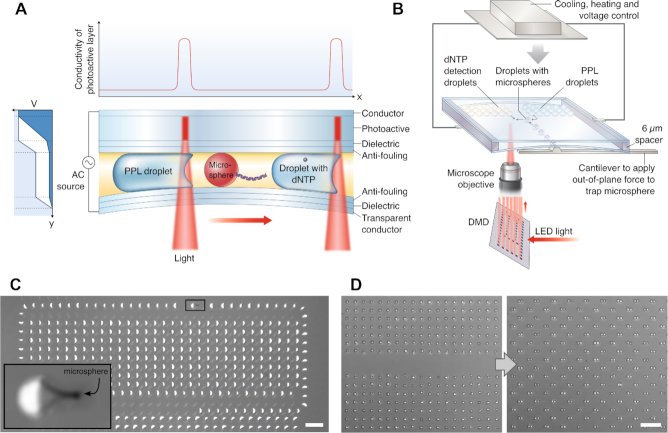Figure 2.
Optical electrowetting-on-dielectric (oEWOD) platform used for droplet manipulation. (A) Cross-section of oEWOD device showing layer structure and droplet motion induced by a decrease in the local contact angle when light is applied asymmetrically to one side of the droplet. As shown in the schematic vertical coordinate vs. voltage graph on the left, the voltage drop switches from being predominantly across the photoactive layer (dark blue shaded area) to across the dielectric (white shaded area) when light is applied. This is a result of the local increase in conductivity of the photoactive layer, as depicted in the plot above the device. The lower substrate is flexed to mechanically trap the microsphere. (B) Schematic of the apparatus, from bottom to top: spatial light modulation used to create arbitrary patterns, the oEWOD device showing positions of droplet populations, and the temperature/voltage control. (C) Operation of moving PPL reagent droplets over the immobilized microsphere. The inset is a magnified view of the highlighted area showing the droplet-microsphere interaction. See Movie S1 for a video of the process. (D) Merging of two droplet populations. The left image shows two size matched arrays of droplets, whilst the right image was taken after the droplets have been paired ready for merging. See Movie S2 for a video of the operation. Scale bars in images are 50 μm.

